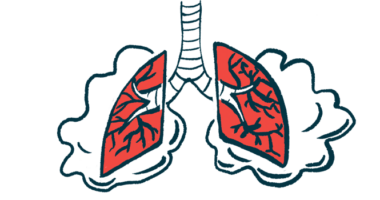Low iron levels may remain in CF despite using CFTR modulators
Deficiency tied to age, shorter symptom-worsening time, lower lung function

Highly effective CFTR modulators, which target the cause of cystic fibrosis (CF), may ease signs of low iron levels in some patients with the disease, but low iron levels may remain even with treatment with the medications, a study finds.
The scientists also emphasized that people with CF who are not on modulators due to lack of a qualifying mutation, intolerance to treatment, or lack of availability are prone to iron deficiency.
The study, “Association between CFTR modulators and changes in iron deficiency markers in cystic fibrosis,” was published in the Journal of Cystic Fibrosis by researchers in the U.S.
In CF, a faulty CFTR protein causes cells to secrete thick, sticky mucus that plugs up the airways and small ducts in the body, leading to breathing problems and poor nutrient absorption from the gut.
Low iron levels, or iron deficiency, which is common in CF, has been associated with advancing age, shorter time to worsening lung symptoms, and lower lung function.
CFTR modulators can lead to thinner mucus being secreted by cells, which can ease symptoms and slow CF’s progression. To see if these medications also increase iron levels, researchers analyzed data from four CF centers in the U.S. between 2012 and 2022. A total of 494 patients received no treatment with CFTR modulators; 149 were on moderately effective CFTR modulator treatment, and 326 were taking highly effective CFTR modulators.
Differences between moderate, highly effective CFTR modulators
Moderately effective CFTR modulators included Orkambi (lumacaftor and ivacaftor) and Symdeko (tezacaftor and ivacaftor), whereas highly effective CFTR modulators included Trikafta (elexacaftor, tezacaftor, and ivacaftor) in patients with at least one copy of F508del, the most common CF-causing mutation, and any modulator therapy in those with a gating mutation.
Just over half (51.2%) the patients were female and had a median age of 26.6. Most (86.4%) carried one or two copies of F508del in the CFTR gene.
Based on a transferrin saturation (TSAT) less than 20% or blood iron levels less than 60 micrograms per deciliter (mcg/dL), 39.1% of patients had iron deficiency. Transferrin is a protein that binds to iron and carries it through the body.
Compared with patients who didn’t receive CFTR modulators, those on highly effective CFTR modulators had a TSAT increase of 8.4% and of 34.4 mcg/dL in blood iron. For those on moderately effective CFTR modulators, the increase wasn’t significant.
The increase in both TSAT (11.4% vs. 5.4%) and blood iron (46 vs. 22.1 mcg/mL) was greater in men than women, suggesting “sex differences exist in iron deficiency in cystic fibrosis,” the researchers wrote. Almost a third (32.8%) of patients were iron deficient at least once during the follow-up.
Median hemoglobin, an iron-containing protein that carries oxygen in the blood, was at 11.9 g/dL. Both moderately effective and highly effective CFTR modulators resulted in hemoglobin increases in both males and females, but only highly effective CFTR modulators led to statistically significantly higher hemoglobin in females.
“Modulator use, particularly of HEMT [highly efective modulators], is associated with improved markers for [iron deficiency] (TSAT, serum iron) and anemia (hemoglobin),” the scientists wrote.
While treatment with CFTR modulators eased signs of low iron levels, iron deficiency may persist in some CF patients, “particularly for those not on modulators due to lack of a qualifying mutation, intolerance to treatment, or lack of availability.”
Prospective studies could “better characterize the clinical impact of [iron deficiency] in CF,” the researchers said.








